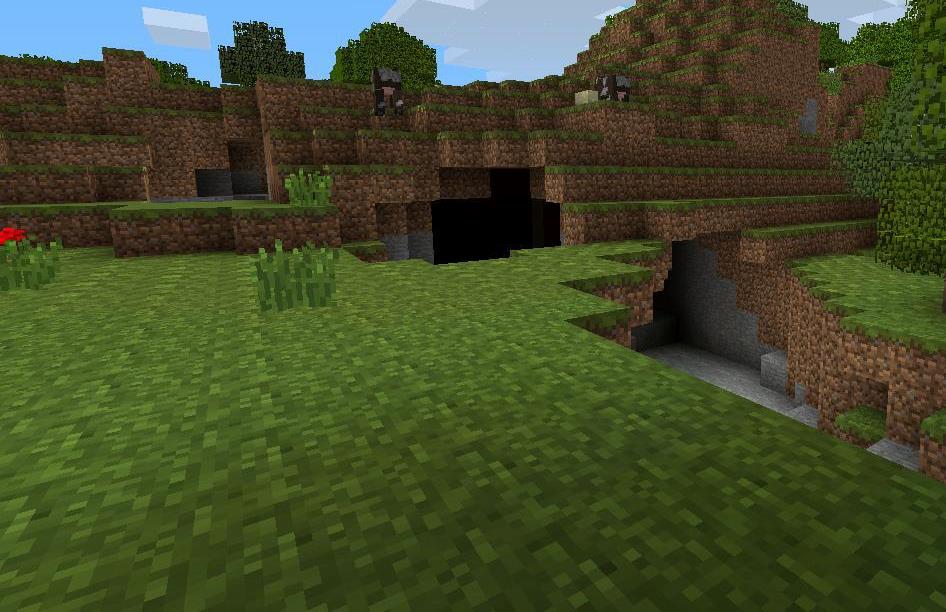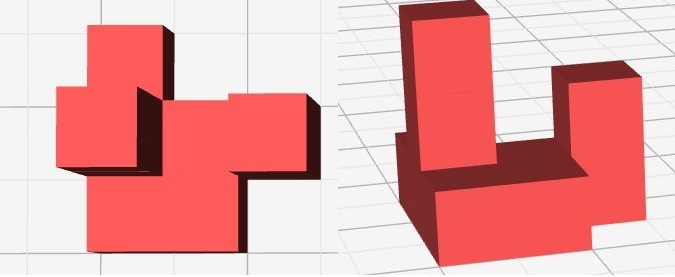杭电5538House Building
2016-04-07 20:48
381 查看
House Building
Time Limit: 2000/1000 MS (Java/Others) Memory Limit: 262144/262144 K (Java/Others)Total Submission(s): 594 Accepted Submission(s): 381
Problem Description
Have you ever played the video game Minecraft? This game has been one of the world's most popular game in recent years. The world of Minecraft is made up of lots of 1×1×1 blocks
in a 3D map. Blocks are the basic units of structure in Minecraft, there are many types of blocks. A block can either be a clay, dirt, water, wood, air, ... or even a building material such as brick or concrete in this game.

Figure 1: A typical world in Minecraft.
Nyanko-san is one of the diehard fans of the game, what he loves most is to build monumental houses in the world of the game. One day, he found a flat ground in some place. Yes, a super flat ground without any roughness, it's really a lovely place to build
houses on it. Nyanko-san decided to build on a n×m big
flat ground, so he drew a blueprint of his house, and found some building materials to build.
While everything seems goes smoothly, something wrong happened. Nyanko-san found out he had forgotten to prepare glass elements, which is a important element to decorate his house. Now Nyanko-san gives you his blueprint of house and asking for your help. Your
job is quite easy, collecting a sufficient number of the glass unit for building his house. But first, you have to calculate how many units of glass should be collected.
There are n rows
and m columns
on the ground, an intersection of a row and a column is a 1×1 square,and
a square is a valid place for players to put blocks on. And to simplify this problem, Nynako-san's blueprint can be represented as an integer array ci,j(1≤i≤n,1≤j≤m).
Which ci,j indicates
the height of his house on the square of i-th
row and j-th
column. The number of glass unit that you need to collect is equal to the surface area of Nyanko-san's house(exclude the face adjacent to the ground).
Input
The first line contains an integer T indicating
the total number of test cases.
First line of each test case is a line with two integers n,m.
The n lines
that follow describe the array of Nyanko-san's blueprint, the i-th
of these lines has m integers ci,1,ci,2,...,ci,m,
separated by a single space.
1≤T≤50
1≤n,m≤50
0≤ci,j≤1000
Output
For each test case, please output the number of glass units you need to collect to meet Nyanko-san's requirement in one line.
Sample Input
2
3 3
1 0 0
3 1 2
1 1 0
3 3
1 0 1
0 0 0
1 0 1
Sample Output
30
20

Figure 2: A top view and side view image for sample test case 1.
Source
2015ACM/ICPC亚洲区长春站-重现赛(感谢东北师大)
Recommend
hujie | We have carefully selected several similar problems for you: 5659 5658 5657 5656 5654
亚洲区的题,说的是,先给一个矩阵,然后矩阵上边是楼的高度,求用刷子把这些楼都刷漆,需要刷的面积,底部不刷,拿第二组测试数据,四个1 不相邻,每个需要刷5个面积,就输出了20:
#include<stdio.h>
#include<string.h>
#include<algorithm>
using namespace std;
int map[110][110],i,j,k,l,m,n,p;
__int64 ans;
int main()
{
scanf("%d",&p);
while(p--)
{
scanf("%d%d",&m,&n);
memset(map,0,sizeof(map));
__int64 help=0;
ans=0;
for(i=0;i<m;i++)
for(j=0;j<n;j++)
{
scanf("%d",&map[i][j]);
ans+=map[i][j];
}
ans*=6;//每个表面积都是6
for(i=0;i<m;i++)
for(j=0;j<n;j++)
{
if(map[i][j+1]&&map[i][j]!=0)//找跟当前楼右边相邻的比较那个小,就表示重叠了多少
ans-=min(map[i][j+1],map[i][j])*2;
if(map[i+1][j]&&map[i][j]!=0)//找当前的下边的
ans-=min(map[i+1][j],map[i][j])*2;
if(map[i][j])
ans-=((map[i][j]-1)*2+1);
}
printf("%I64d\n",ans);
}
}
相关文章推荐
- 一道2年级数学题 10人做9人错
- HDU-1163Eddy's digital Roots
- 网页设计与制作模拟题
- 敬请关注,全国软考有奖自测专题
- 高精度加法——杭电1002
- Hdu2066(一个人的旅行)
- 2011ACM福州网络预选赛B题 HDU4062 Abalone
- POJ 1012 Joseph
- POJ 1013 Counterfeit Dollar
- 杭电1870 愚人节的礼物
- 关于杭电1405 The Last Practice 的问题
- TOJ 3051
- TOJ 1537
- TOJ 1252
- TOJ 2544
- TOJ 2399
- TOJ 2646
- TOJ 1981
- TOJ 2814
- TOJ 4453
